Bilberry
- Scientific Name: Vaccinium myrtillus
- Plant Family: N.O. Vacciniaceae
- Parts Used: The ripe fruit. The leaves.
- Actions: astringent, diuretic, tonic, antiseptic,antibacterial
Varieties:
- V. arboreum, or Farkleberry. This is the most astringent variety, and both berries and root-bark may be used internally for diarrhoea, chronic dysentery, etc. The infusion is valuable as a local application in sore throat, chronic ophthalmia, leucorrhoea, etc.
- V. resinosum, V. damusum, and V. gorymbosum have properties resembling those of V. myrtillus.
- The Bog Bilberry ( V. uliginosum) is a smaller, less erect plant, with round stems and untoothed leaves, greyish green beneath. Both flowers and berries are smaller than those of the common Bilberry. This kind is quite absent in the south and only to be found in mountain bogs and moist copses, in Scotland, Durham and Westmorland.
- The ‘Huckleberry’ of North America, so widely appreciated there, is our Bilberry – the name being an obvious corruption of ‘Whortleberry.’
Constituents: The leaves contain glucoquinones, which reduce the levels of sugar in the blood. The skin of the fruits contains anthocyanin and is specific in the treatment of hemeralopia (day-blindness). The fruit is a rich source of anthocyanosides, which have been shown experimentally to dilate the blood vessels.
The Basics:
Although often called huckleberry, the bilberry is more nearly related to the cranberry. Vaccinium myrtillus has been used for nearly 1,000 years in traditional European medicine. Bilberry fruits have been used in the traditional Austrian medicine internally (directly or as tea or liqueur) for treatment of disorders of the gastrointestinal tract and diabetes. Herbal supplements of V. myrtillus (bilberry) on the market are used for circulatory problems, as vision aids, and to treat diarrhea and other conditions.
Bilberry is a well-known folk remedy for poor vision, especially for people who suffer from “night blindness,” that is, they have difficulty seeing in the dark. In fact, bilberry jam was given to Royal Air Force pilots who flew nighttime missions during World War II. It works by accelerating the regeneration of retinol purple, commonly known as visual purple, a substance that is required for good eyesight. European medical journals are filled with studies confirming bilberry’s positive effect on vision. Unfortunately, this herb has not received the attention it deserves in the American medical community so far.
Some people use bilberry for conditions of the heart and blood vessels including hardening of the arteries (atherosclerosis), varicose veins, decreased blood flow in the veins, and chest pain. Bilberry is also used for chronic fatigue syndrome (CFS), hemorrhoids, diabetes, osteoarthritis, gout, skin infections, gastrointestinal (GI) disorders, kidney disease, and urinary tract infections (UTIs).
The dried leaves of bilberries are used in the treatment of a variety of complaints. A tea made from the dried leaves is strongly astringent, diuretic, tonic and an antiseptic for the urinary tract. It is also a remedy for diabetes if taken for a prolonged period. Another report says that the leaves can be helpful in pre-diabetic states but that they are not an alternative to conventional treatment. The leaves contain glucoquinones, which reduce the levels of sugar in the blood.
A decoction of the leaves or bark is applied locally in the treatment of ulcers and in ulceration of the mouth and throat. It is sometimes applied directly to the inside of the mouth for mild mouth and throat soreness. A distilled water made from the leaves is an excellent eyewash for soothing inflamed or sore eyes.
Whilst the fresh fruit has a slightly laxative effect upon the body, when dried it is astringent and is commonly used in the treatment of diarrhea etc. The dried fruit is also antibacterial and a decoction is useful for treating diarrhea in children. The skin of the fruits contains anthocyanin and is specific in the treatment of hemeralopia (day-blindness). The fruit is a rich source of anthocyanosides, which have been shown experimentally to dilate the blood vessels, this makes it a potentially valuable treatment for varicose veins, hemorrhoids and capillary fragility.
How does it work?
Bilberry contains chemicals called tannins that can help improve diarrhea, as well as mouth and throat irritation, by reducing swelling (inflammation). There is some evidence that the chemicals found in bilberry leaves can help lower blood sugar and cholesterol levels. Some researchers think that chemicals called flavonoids in bilberry leaf might also improve circulation in people with diabetes. Circulation problems can harm the retina of the eye.
Bilberries vs Blueberries:
 There does seem to be some confusion between bilberries and American blueberries. This is because Bilberries and Americanblueberries are nearly identical, and used for the same purposes. One can distinguish bilberries from their American counterpart by the following differences:
There does seem to be some confusion between bilberries and American blueberries. This is because Bilberries and Americanblueberries are nearly identical, and used for the same purposes. One can distinguish bilberries from their American counterpart by the following differences:
- Bilberries have dark red, strongly fragrant flesh and red juice that turns blue in basic environments: blueberries have white or translucent, mildly fragrant flesh.
- Bilberries grow on low bushes with solitary fruits, and are found wild in heathland in the Northern Hemisphere; blueberries grow on large bushes with the fruit in bunches.
- Bilberries are usually harvested from wild plants, while blueberries are usually cultivated and are widely available commercially.
- Cultivated blueberries often come from hybrid cultivars, developed about 100 years ago by agricultural specialists,most prominently by Elizabeth Coleman White, to meet growing consumer demand; since they are bigger, the bushes grow taller, and are easier to harvest.
- Bilberry fruit will stain hands, teeth and tongue deep blue or purple while eating; it was used as a dye for food and clothes: blueberries have flesh of a less intense colour, thus less staining
- When cooked as a dessert, bilberries have a much stronger, more tart flavour and a rougher texture than blueberries.
Adding to the confusion is the fact there are also wild American blueberry varieties, sold in stores mainly in the USA and Canada. These are uncommon outside of Northern America. Even more confusion is due to the huckleberry name, which originates from English dialectal names ‘hurtleberry‘ and ‘whortleberry‘ for the bilberry.
Habitat:
Bilberry grows on moors, heaths, wood edges where the soil is acidic. Bilberries flourish best on high grounds, being therefore more abundant in the north and west than in the south and east of England: they are absent from the low-lying Cambridgeshire and Suffolk, but on the Surrey hills, where they are called ‘Hurts,’ cover the ground for miles.
Vaccinium myrtillus is found natively in Europe, northern Asia, Greenland, Western Canada, and the Western United States. It occurs in the wild on heathlands and acidic soils. Its berry has been long consumed in the Old World. It is related to the widely cultivated North American blueberry.
Cultivation:
Sow seed late winter in a greenhouse in a lime-free potting mix and only just cover the seed. Stored seed might require a period of up to 3 months cold stratification. Another report says that it is best to sow the seed in a greenhouse as soon as it is ripe. Once they are about 5 cm tall, prick the seedlings out into individual pots and grow them on in a lightly shaded position in the greenhouse for at least their first winter. Plant them out into their permanent positions in late spring or early summer, after the last expected frosts.
Cuttings of half-ripe wood, 5 to 8 cm with a heel, August in a frame. Slow and difficult. Cuttings of mature wood in late autumn. Layering in late summer or early autumn. Another report says that spring is the best time to layer. Takes 18 months. Division of suckers in spring or early autumn.
Collection:
Leaves: Gather the leaves when the plant is fully developed but before the berries are ripe. These leaves should be harvested in early autumn, only green leaves being selected, and then dried in gentle heat. The leaves should not be used medicinally for more than 3 weeks at a time.
Berries: They turn into deep bluish black berries by the end of July/beginning of August, depending on local conditions. To be sure, picking each soft little berry requires a certain degree of delicacy and many will squish their sweet juice all over your hands and clothes. Make sure you are dressed for the occasion, as you will never completely get them out again.
The only snag with Bilberry is that the shrub grows no more than 60 cm tall, meaning that the gathering of the fruit requires some stooping unless you hail from Lilliput. This is especially true on windswept mountains, where the small, much-branched shrub huddles down even lower. Often the berries are hidden under the oval, finely toothed leaves, so you will have to look hard for them.
Medicinal Uses:
Bilberry leaf and fruit contain a variety of antioxidant compounds that may prevent the development of cardiovascular disease. In addition to vitamin C, the berries contain plant chemicals known as anthocyanosides, among them quercetrin and hyperoside. Collectively, these agents exert several positive health effects. First, they prevent free radicals from causing oxidative damage in cells, which might otherwise trigger the generation of rogue cancer cells.
Anthocyanosides also help to strengthen the walls of blood vessels and because they promote the relaxation of vein and capillary smooth tissue, they increase the circulation of blood. In fact, bilberry is traditionally used to counter venous insufficiency, a condition characterized by a reduced volume of blood returning to the heart from the legs.
Bilberry anthocyanosides also prevent blood platelet aggregation, which can cause blood clots that can lead to a heart attack or stroke. Vitamin A is required for sharp vision, while Vitamin C helps form collagen and is needed for growth and repair of tissue cells and blood vessels. Anthocyanosides support and protect collagen structures in the blood vessels of the eyes, assuring strong, healthy capillaries that carry vital nutrients to eye muscles and nerves.
Bilberries, like blueberries, are often consumed as a health food in order to help manage high blood pressure, improve heart health, boost the immune system and treat various diseases such as angina pectoris, indigestion and malnutrition. The berries, when extruded into a juice, is even employed for the treatment of urinary tract infections, kidney and liver disorders, pancreatitis, gastrointestinal problems, diabetes, osteoarthritis and chronic fatigue syndrome.
Bilberry contains anthocyanosides which are potent antioxidants which strengthen blood vessels and capillary walls, improve red blood cells, stabilize collagen tissues such as tendons, ligaments and cartilage and has cholesterol lowering effects. In addition, it helps to maintain the flexibility of red blood cells, allowing them to pass through the capillaries and supply oxygen. The herb has been shown to be a vasodilator that opens blood vessels and lowers blood pressure.
They also increase retinal pigments that allow the eye to tolerate light. Since the eyes have a high concentration of capillaries, bilberry may be particularly helpful in improving eyesight. The herb has been shown to improve night vision, slow macular degeneration, prevent cataracts and diabetic retinopathy.
Taken long-term, bilberry improves eye health, protecting against damage to the eye resulting from diabetes and high blood pressure. It can sometimes help in short-sightedness. Regular consumption of Bilberry tea can improve vision by strengthening the retina and blood vessels of the walls in the eyes. Contains nutrients needed to protect eyes from eyestrain or fatigue and can improve circulation to the eyes.
It is also used to improve varicose veins and has anti-aging effects on collagen structures.
Like a majority of other berries, bilberry possesses very significant amounts of antioxidants and can be employed as a supplement to address diseases such as cancer, reverse the hardening of the arteries and the ravages of stress, as well as to bolster flagging health. Foodstuffs containing fresh or dried berries have along been given as a cure to diseases such as colds, flu, fever, cough and general malaise.
Taken in small amounts the dried berries can be use as an herbal remedy for diarrhea while intake of large quantities of the fresh berries can cause loose stools. Bilberry is also recommended for nausea and indigestion.
Sometimes it will be used as a treatment for mild inflammation of the mucous membranes in the mouth and throat. Other uses Bilberry helps to improve poor peripheral circulation and prevents fluid leakage from blood vessels. Many circulatory problems can benefit from taking bilberry, including hemorrhoids and varicose veins, chilblains, Raynaud’s disease, intermittent claudication and Bilberry’s potent antioxidant activity makes it a useful supplement in many chronic health problems, especially where circulation is poor. Reducing bruises from black eyes.
Bilberry is used traditionally as a natural remedy for kidney stones, scurvy and urinary infections. Bilberries can be used as a supportive treatment for diabetes, both because the berries reduce blood sugar and because they can prevent eye diseases and blood vessel disorders that can accompany diabetes.
Tea is given to treat stomach problems and soothe the digestive tract.
- Tea for diarrhea: Simmer 1 tbsp dried berries in 2 cups water for 20 minutes. Strain. Drink ½ cup every 3-4 hours .
Bilberries, along with black cherries, blueberries and strawberries have proven their ability to reduce levels of uric acid. Those suffering from gout should be getting at least two servings a day of these berry gout fighters. During the winter when fresh berries are not available, used dried bilberries in tea and frozen blueberries as desserts.
Bilberry leaf extract appears to provide some protection against the development of atherosclerosis by lowering levels of LDL cholesterol, which is largely responsible for the formation of arterial plaque. The leaves of the plant have also been employed since ancient time as a medicine in its own right; it being decocted and given as a remedy for coughs and cold.
Stronger decoctions of the leaf are even prescribed to help lower blood pressure and treat dizzy spells. A tisane made from bilberry leaf is even reputedly helpful for lowering blood pressure and stabilising erratic blood sugar levels. Very mild decoctions of the leaf is employed for curing stomach pains, while moderately strong decoctions are used to treat chest pains, circulatory problems and aches and pains brought about by arthritis.
When employed as a supplementary medicine, it is believed to help treat diabetes.
Like the fruits, a topical application of a very strong decoction of the leaves may help to cure various skin diseases and hasten the healing of wounds and if employed as a mouth rinse, can even be used to treat cold sores, canker sores and halitosis. Bilberry leaves are a useful urinary antiseptic for conditions such as cystitis. The plant can also help Crohn’s disease.
Preparation and Dosage:
Infusion: Boil 2 – 3 tsp of dried leaves in 1 cup of water. Take 1 cup per day. For dried berries, simmer 1 cup of water and 1 tsp dried berries for 15 minutes. Drink 1-2 cups per day, cold.
Juice: Mash about 1 cup of billberries. Add 1 cup of water (or more if you like it thinner). Simmer briefly, add sugar or honey to taste, strain through cheese cloth and cool.
Tea: Use 1 tsp crushed, dried berries to each teaspoon of water. Bilberry is a great tasting tea and blends well with spices like cinnamon, or with other berries.
Decoction: Use 1 tsp. dried berries with 1 cup water; let stand for 8 hours.
Extract: Mix 15-40 drops in water or juice, and drink 3 times daily.
Tincture: Take 15 to 40 drops in water, 3 or more times a day as needed.
Dosages:
- The typical dose of the dried, ripe berries: 20-60 grams daily.
- People also drink a type of tea made from 5-10 grams (1-2 teaspoons) of the mashed berries.
- A dose of 160 mg of bilberry extract taken twice daily has been used in people with diseased retinas.
- Bilberry leaf is commonly used as a tea. The tea is prepared by steeping 1 gram, 1-2 teaspoons, finely chopped dried leaf in 150 mL boiling water for 5-10 minutes, and then straining. Don’t use bilberry leaf long-term.
Combinations:
Often used with Hawthorn.
As a food source:
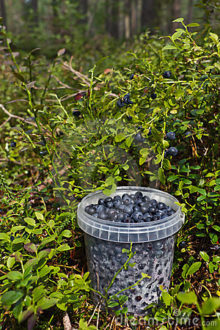 Bilberries make good eating just by themselves, or raw with cream. If enough can be gathered, they can be mixed in fruit salads, cooked in fruit tarts, made into jam, put into jellies and traditional English summer puddings. They also make a heavenly sauce for game. In northern Europe, where the Bilberry crops prolifically, the fruit is used to make wine.
Bilberries make good eating just by themselves, or raw with cream. If enough can be gathered, they can be mixed in fruit salads, cooked in fruit tarts, made into jam, put into jellies and traditional English summer puddings. They also make a heavenly sauce for game. In northern Europe, where the Bilberry crops prolifically, the fruit is used to make wine.
Sweet and very tasty, the berries make an excellent preserve, their small seeds making them suitable for jam. A slightly acid flavor when eaten raw. The fruit can be dried and used like currants. A tea is made from the leaves.
The fruit is globular, with a flat top, about the size of a black currant. When eaten raw, they have a slightly acid flavor. When cooked, however, with sugar, they make an excellent preserve. Gerard tells us that ‘the people of Cheshire do eate the black whortles in creame and milke as in these southern parts we eate strawberries.’ On the Continent, they are often employed for coloring wine.
Stewed with a little sugar and lemon peel in an open tart, Bilberries make a very enjoyable dish. Before the War, immense quantities of them were imported annually from Holland, Germany and Scandinavia. They were used mainly by pastry cooks and restaurant-keepers.
Owing to its rich juice, the Bilberry can be used with the least quantity of sugar in making jam: half a pound of sugar to the pound of berries is sufficient if the preserve is to be eaten soon. The minuteness of the seeds makes them more suitable for jam than currants.
Historically:
Bilberry juice yields a clear, dark-blue or purple dye that has been much used in the dyeing of wool and the picking of berries for this purpose, as well as for food, constitutes a summer industry in the ‘Hurts’ districts. Owing to the shortage of the aniline dyestuffs formerly imported from Germany, Bilberries were eagerly bought up at high prices by dye manufacturers during the War, so that in 1917 and 1918 a large proportion of the Bilberry crop was not available for jam-making, as the dyers were scouring the country for the little blue-black berries.
In many European countries a special day was set aside for harvesting the berries, which was the nearest Sunday to Aug 2st. In Ireland this was known as Dumhnach na bh Fraochan, Fraughan Sunday, when whole communities would make a day of picking Billberries with rush baskets. The savvy also took a wooden comb, otherwise the Billberries have to be picked individually.
Miners across Britain, meanwhile, ate bilberries by the score in the belief that the fruit offset the toxic fumes of the coal pits.
The huckleberry (bilberry) is so beloved that the term ‘I’ll be your huckleberry’ came to mean ‘I’m the right person for the job’, and also as a term for a significant other.
Folk Names:
- Airelle
- Arándano
- Black Whortles
- Black whortleberry
- Bleaberry
- Blueberries
- Brimbelle
- Burren Myrtle
- Dyeberry
- Feuille de Myrtille
- Fraughan
- Fruit de Myrtille
- Gueule Noire
- Huckleberry
- Hurtleberry
- Hurts
- Mauret
- Trackleberry
- Vaccinium Frondosum
- Whinberry
- Whortleberry
- Whorts
- Wineberry
Folklore:
Bilberries have long been considered as protective herbs. When employed esoterically, the dried leaves may be powdered and sprinkled around the perimeters of a household or otherwise burnt as an incense to protect the inhabitants within from malign forces and to drive away negativity.
An incense of bilberry leaves is also said to generate luck and facilitate in the acquisition of material desires or wealth.
The leaves may be encased in a medicine pouch and carried upon one’s person during traveling to protect one from harm. When worn next to one’s skin, it is said to effectively nullify nearly all forms of psychical attacks. The protective properties of the leaf are also possessed by the berries and it is said in folklore that eating foodstuffs containing the berry effective de-hexes a person of any spell or enchantment.
It is the county flower of Leeds. It is also a symbol of the open air of the hills, especially around Leeds, where the plant will be forever associated with the novels and poetry of the Bronte sisters.
Other Uses:
Quinic acid is found in the leaves, and a little tannin. Triturated with water they yield a liquid which, filtered and assayed with sulphate of iron, becomes a beautiful green, first of all transparent, then giving a green precipitate. The green dye obtained from the leaves is used to color fabrics. A blue or black dye is obtained from the fruit. This can also be used as an ink.
Special Precautions and Warnings:
The dried, ripe fruit of bilberry is LIKELY SAFE for most people when eaten in typical food amounts.
Bilberry fruit extracts are POSSIBLY SAFE when taken by mouth for medicinal uses for up to one year. Also, a specific combination product (Mirtogenol) containing bilberry and French maritime pine bark (Pycnogenol) has been used safely for up to 6 months.
Bilberry leaf is POSSIBLY UNSAFE for most people when taken in high doses or for a long time.
Bilberry side effects can be serious. Bilberry possesses anti-platelet activity, it may interact with NSAIDs, particularly aspirin.
Excessive drinking bilberry juice may cause diarrhea.
Bilberry side effects may include mild digestive distress, skin rashes and drowsiness.
High doses of bilberry leaf can be poisonous and should only be consumed as a supplement or medicine in minute doses, as it may compromise the ability of the body to properly synthesise sugar.
Drug Interactions:
Medications for diabetes (Antidiabetes drugs) interacts with BILBERRY
Bilberry leaves might decrease blood sugar. Diabetes medications are also used to lower blood sugar. Taking bilberry leaves along with diabetes medications might cause your blood sugar to go too low. Monitor your blood sugar closely. The dose of your diabetes medication might need to be changed.
Some medications used for diabetes include glimepiride (Amaryl), glyburide (DiaBeta, Glynase PresTab, Micronase), insulin, pioglitazone (Actos), rosiglitazone (Avandia), chlorpropamide (Diabinese), glipizide (Glucotrol), tolbutamide (Orinase), and others.
Medications that slow blood clotting (Anticoagulant / Antiplatelet drugs) interacts with BILBERRY
There is some concern that bilberry might slow blood clotting. Taking bilberry along with medications that also slow clotting might increase the chances of bruising and bleeding. However, there is not enough information to know if this is a serious concern.
Some medications that slow blood clotting include aspirin, clopidogrel (Plavix), diclofenac (Voltaren, Cataflam, others), ibuprofen (Advil, Motrin, others), naproxen (Anaprox, Naprosyn, others), dalteparin (Fragmin), enoxaparin (Lovenox), heparin, warfarin (Coumadin), and others.
Pregnancy and breast-feeding: Not enough is known about the use of bilberry during pregnancy and breast-feeding. Stay on the safe side and avoid use.
Diabetes. Bilberry leaf might lower blood sugar. Taking bilberry leaves along with diabetes medications might cause your blood sugar to go too low. Monitor your blood sugar closely.
Surgery: Bilberry might affect blood glucose levels. This could interfere with blood sugar control during and after surgery. Stop taking bilberry at least two weeks before a scheduled surgery.
Recipes and Formulas:
Rennie Luttrull: queen-annes-lace-seeds
Rosanna: Spignel aka Bald Money
Annamarie Squatrito: Fumitory
EILEEN Klinghagen: Pumpkin
Mahmudul Hasan: Celery
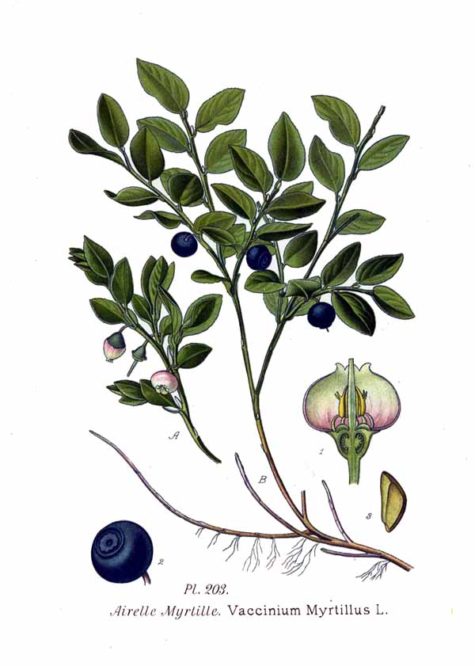
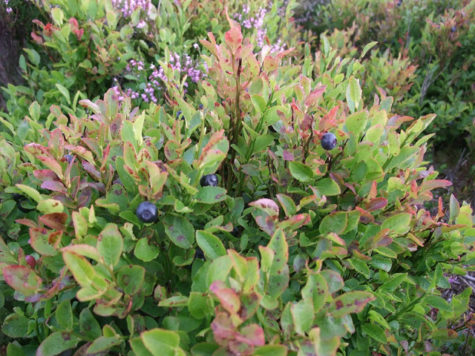
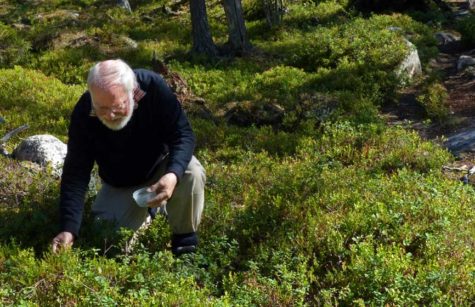
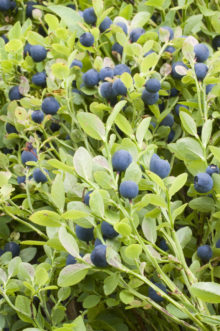


Leave a Reply